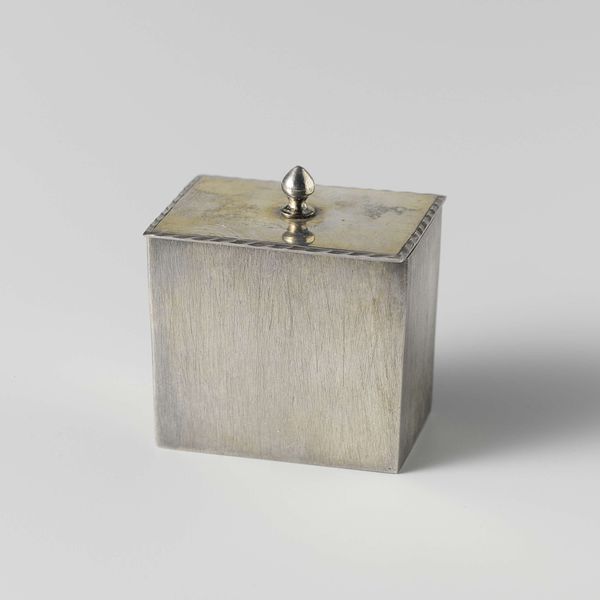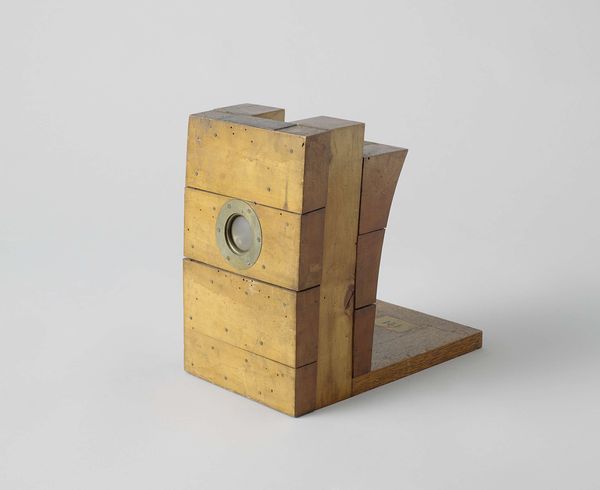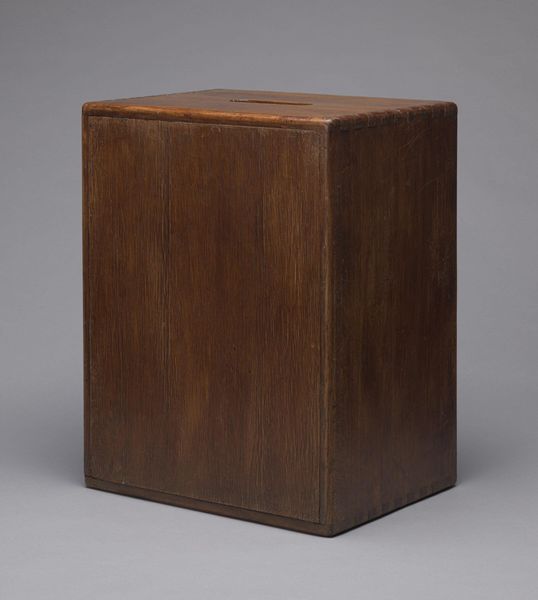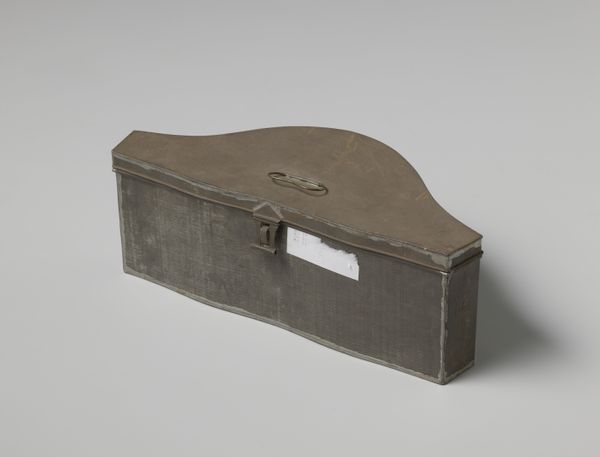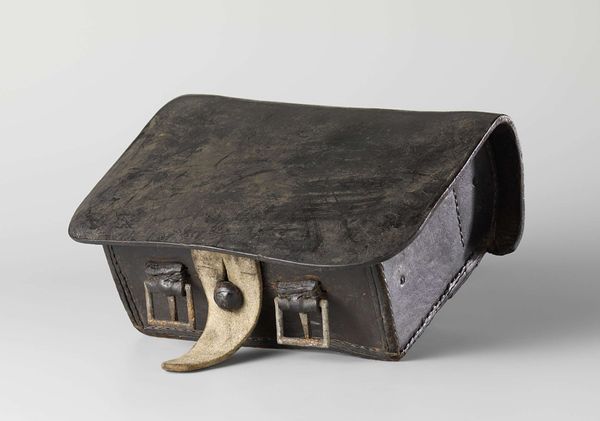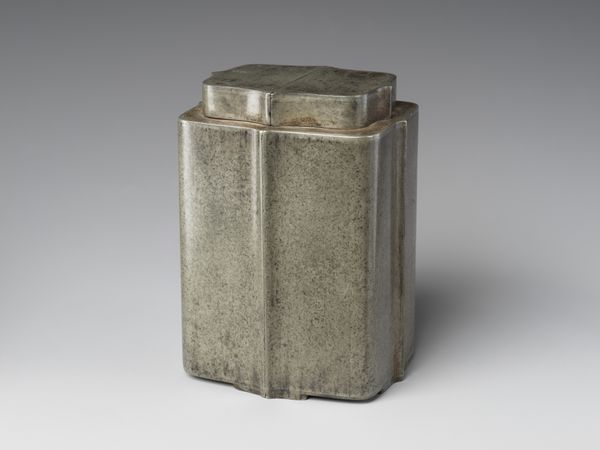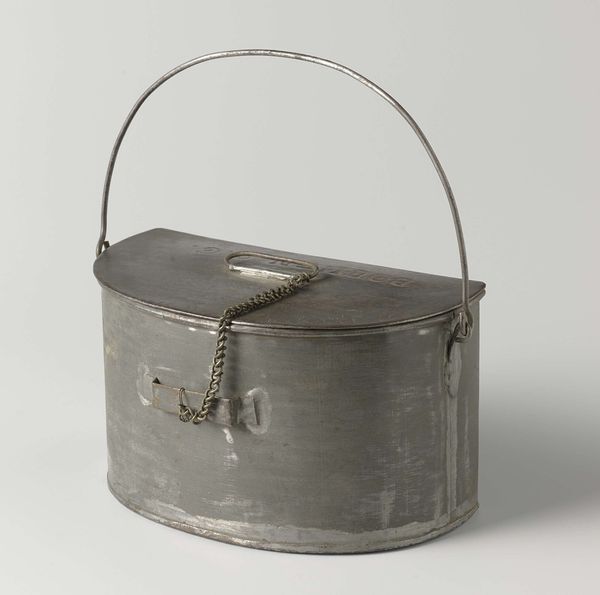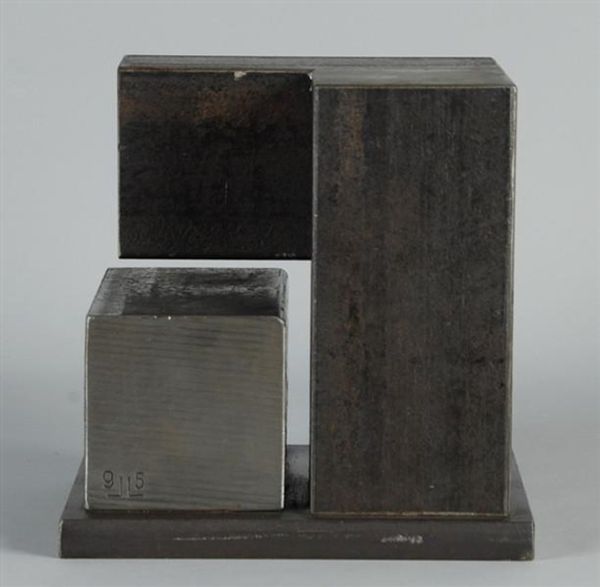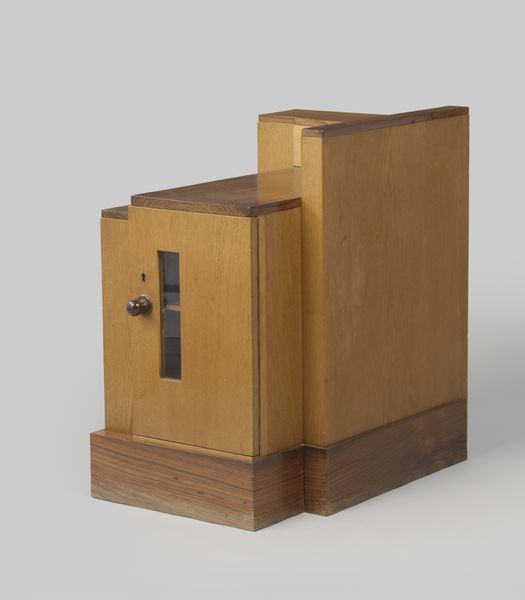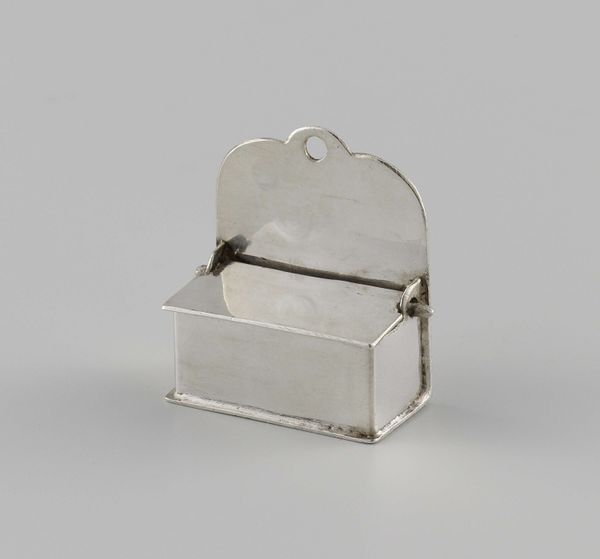
metal, bronze, photography
#
studio photography
#
product studio photography
#
product shot
#
3d printed part
#
metal
#
bronze
#
photography
#
product design photgrpaphy
#
metallic object render
#
product mock up
#
product photography
#
studio mock-up
#
product render
Dimensions: height 63 cm, width 63.8 cm, depth 25.5 cm
Copyright: Rijks Museum: Open Domain
Curator: It’s quite imposing, isn’t it? Stark, even. It makes me think of brutalist architecture scaled down to artifact size. Editor: Indeed. We are looking at a "Powder Chest," created around 1866 by Enthoven & Co. It's crafted primarily from bronze and metal, evident in its robust construction and distinct surface texture. Curator: The choice of materials speaks volumes. Bronze, of course, connects to a long history of metalworking and warfare. But placing this chest, designed to store gunpowder, within that tradition, well it subtly elevates the craft. Were these mass-produced for military use? Editor: Given Enthoven & Co's standing at the time, they likely produced these on a fairly large scale, supplying materials vital to colonial enterprises and state power. Each chest became a tool in extending influence through armed conflict, far from the museum walls. Curator: You can see the wear and tear in the aged patina. These weren’t purely functional objects; there’s a tactile element to how the bronze panels curve into each other. Were these artisan made with repousse and chasing to shape the form or die-pressed and stamped? The method affects its status, whether hand crafted or industrialized. Editor: These were crucial objects supporting expansionist strategies, their physical weight and sturdy build reflective of the ambitions and expectations placed on these colonial endeavors. Consider where and by whom these objects were employed. What narratives did these forms advance or obscure? Curator: Its purpose seems paradoxical now – a beautifully rendered container designed to hold a destructive force. We value the craft and skill but recoil at its instrumental use. Editor: Precisely. The object serves as a conduit into considering how we memorialize, collect, and frame even violent histories within aesthetic parameters. Curator: Thank you, I hadn't considered the collecting habits surrounding this item, I was very absorbed by the making process. Editor: Always a fruitful connection, I hope that our audience takes a little of each point of view and that these ideas can live a little longer now in a new conversation.
Comments
No comments
Be the first to comment and join the conversation on the ultimate creative platform.
